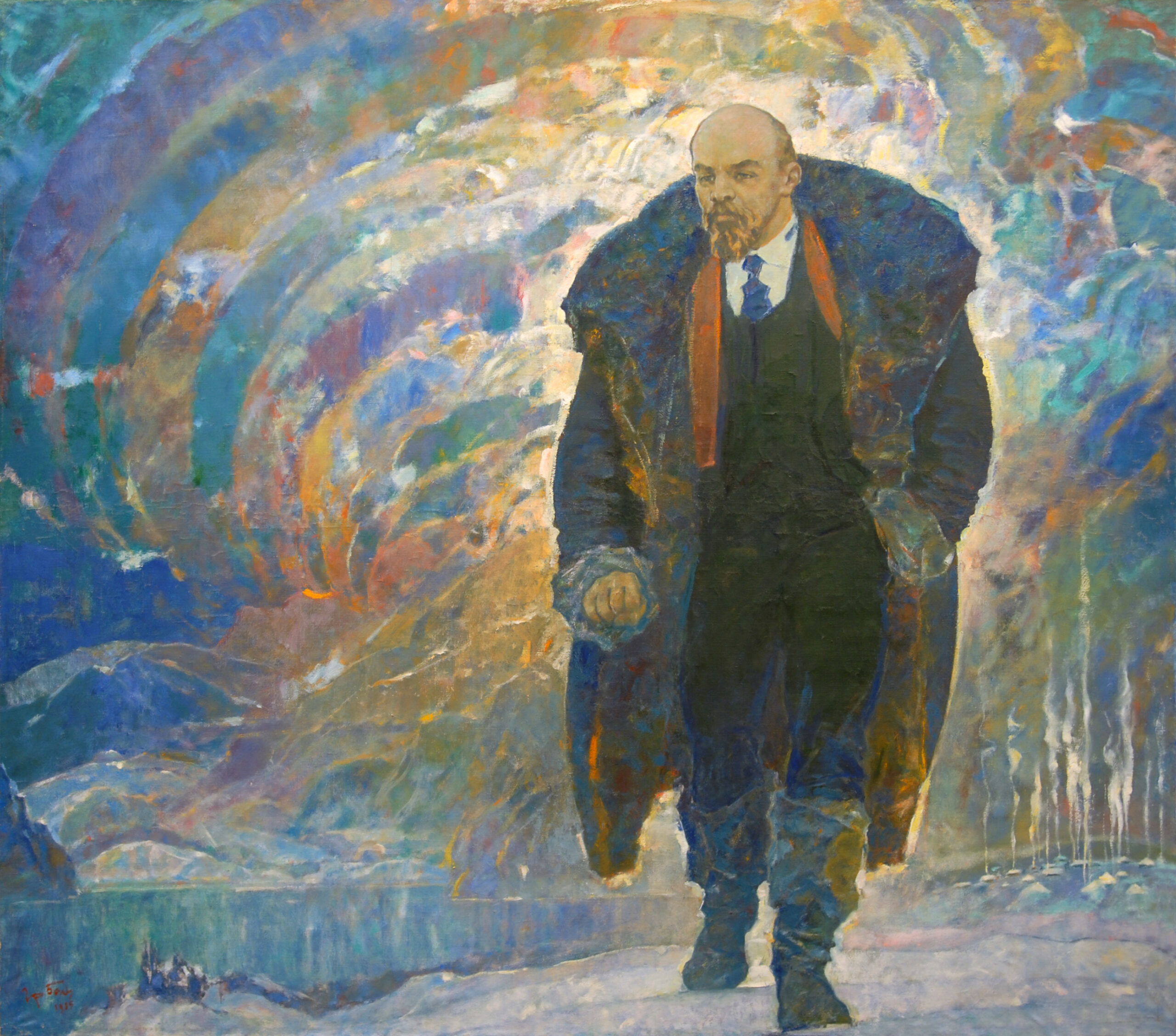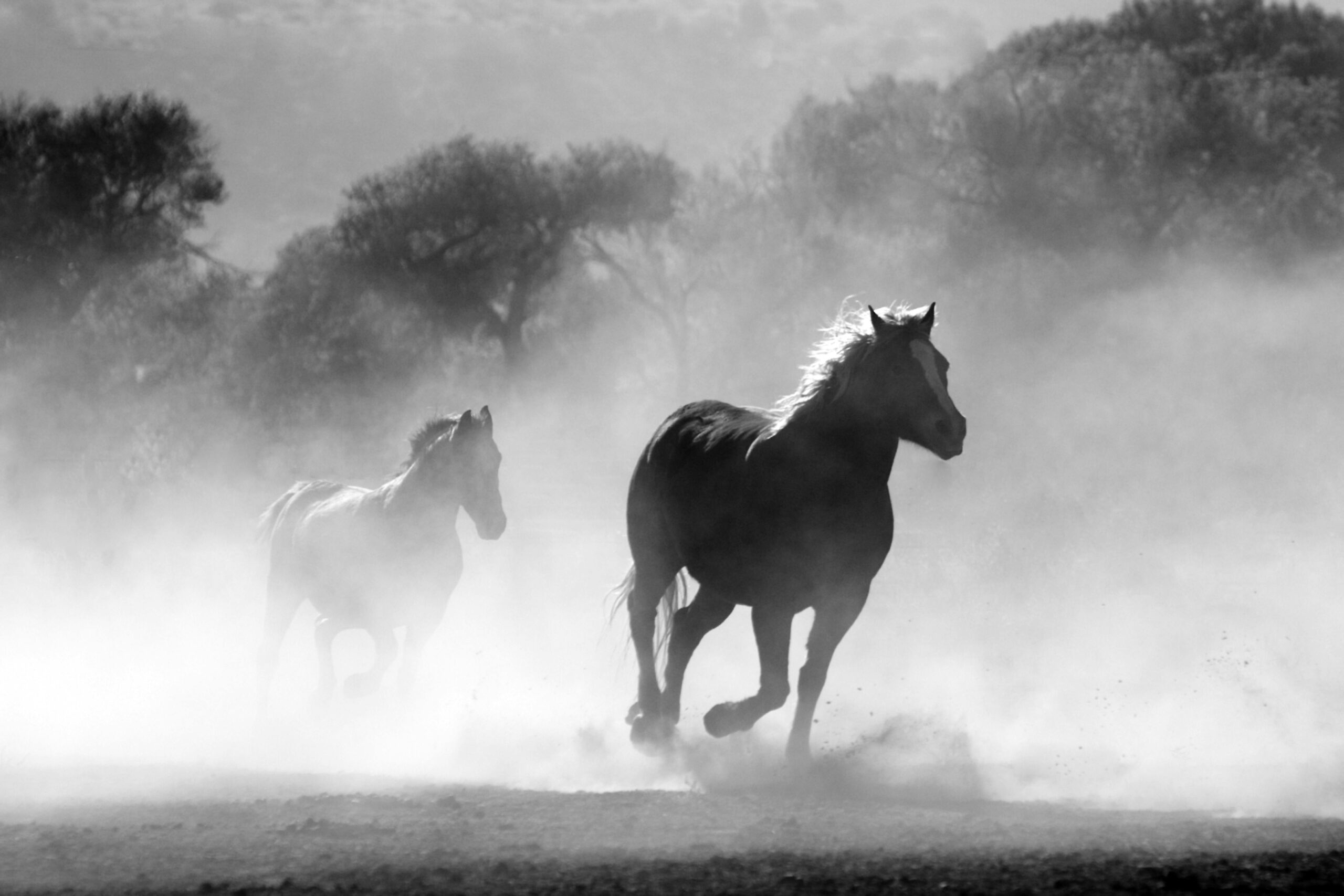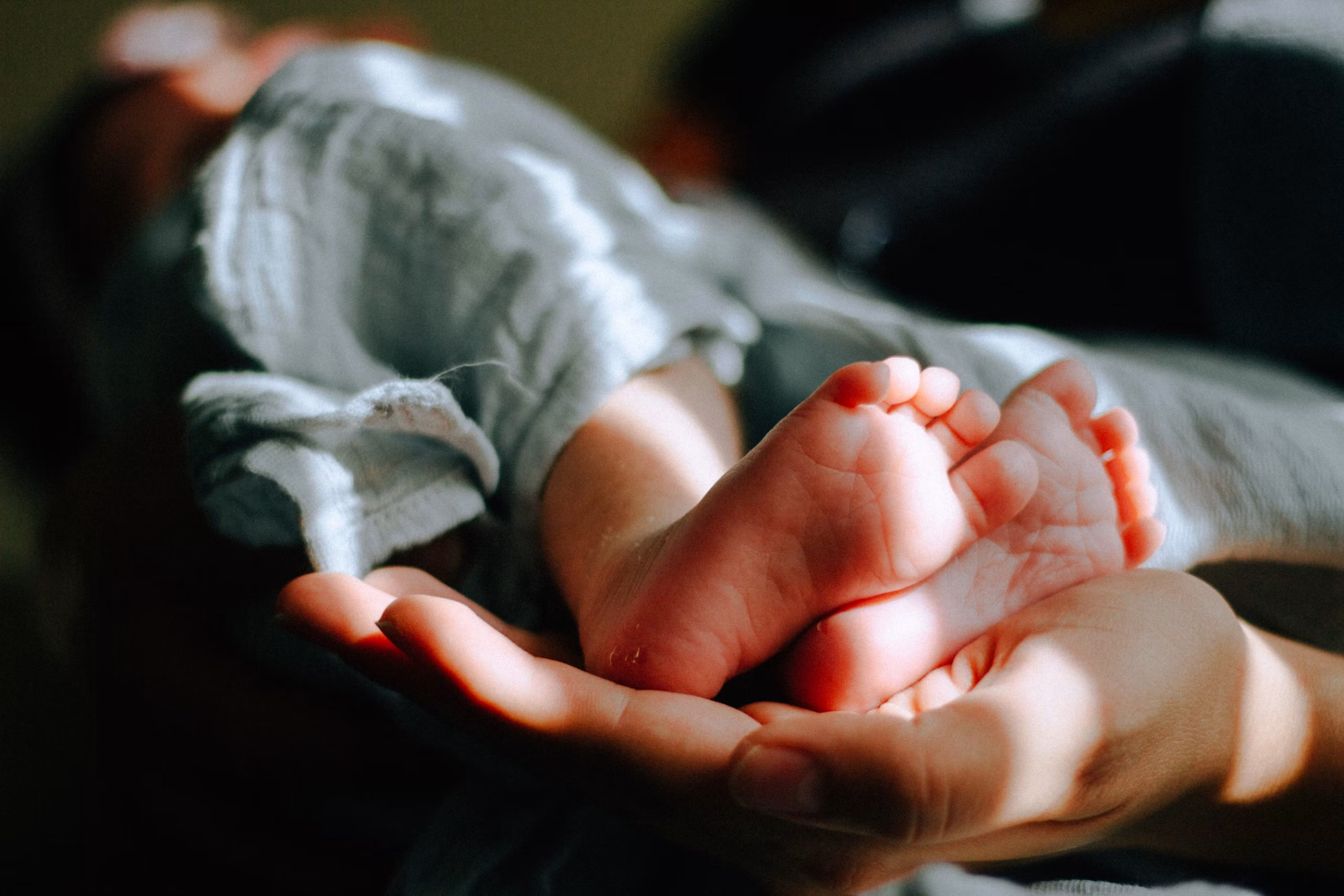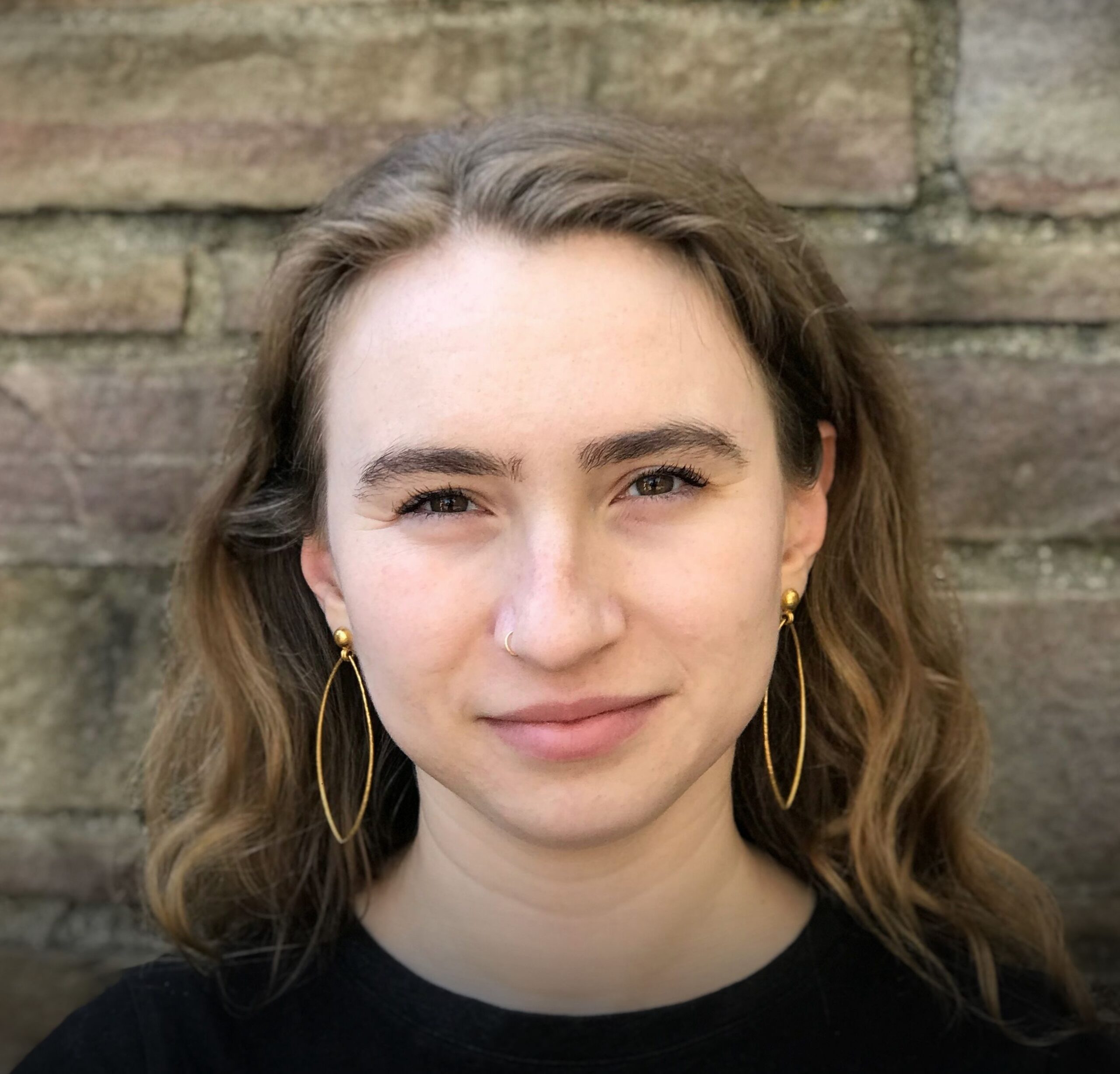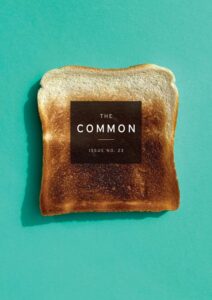From THE MEAD ART MUSEUM
More than thirty years after the collapse of the Soviet Union, the independent states that emerged from its territory continue to grapple with its legacies. In Ukraine, this struggle has unfolded amidst a political and cultural war waged by Russia. As Vladimir Putin’s regime weaponizes the shared Soviet past in its attempts to erase Ukraine’s nationhood, the Soviet legacy remains the subject of heated debate among Ukrainians. While some identify “Sovietness” with “Russianness” and seek to remove it from the national narrative, others attempt to reclaim their Soviet legacy, emphasizing the agency of Ukrainians who created it.
A Contentious Legacy engages with the visual culture of Soviet Ukraine and draws on a selection of paintings shown at state-sponsored exhibitions between the 1960s and 1980s. These works originate from the collection of Ukrainian American lawyer Jurii Maniichuk, who lived in Kyiv in the years following the Soviet Union’s dissolution. As Soviet-era art became obsolete in newly independent Ukraine, many paintings risked damage or loss. With the help of expert art historians and critics, Maniichuk acquired almost 180 large-scale paintings reflecting the thematic and stylistic diversity of official art in Soviet Ukraine. His wife, American journalist Rose Brady, distributed the collection between the Mead Art Museum, Georgia Museum of Art in Athens, and The Museum of Russian Art in Minneapolis after Maniichuk’s death in 2009.
This exhibition marks the Mead’s first presentation of eleven paintings from the Maniichuk-Brady Collection acquired in 2020, featured alongside eight works traveling from Minneapolis. The project explores universally Soviet and uniquely Ukrainian dimensions of this legacy, while also revealing the internal tensions and complexity of Soviet Ukrainian art—an art marked by contradiction, unpredictability, and latent creative potential within a tightly controlled ideological system.
Many of the featured artists came from regions now under or deeply affected by Russian occupation, including Kharkiv, Sumy, Zaporizhzhia, Luhansk, and Donetsk. Soviet-era cultural artifacts from these areas hold a fraught status: they are remnants of an oppressive regime whose successor now weaponizes them against Ukraine, yet they are also integral to Ukraine’s cultural landscape—one endangered by ongoing violence and in urgent need of protection. Centered on Soviet Ukraine, A Contentious Legacy addresses topics—such as state control over cultural production, historical memory, intricate relationships between fine art and propaganda, and artistic self-determination in constrained environments—that have broad resonance with many regions and historical moments.
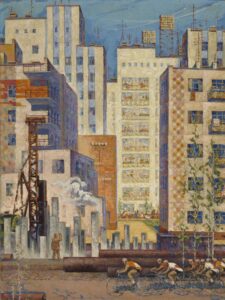
Ivan Shapoval, Morning of My City (Sumy), 1975. Oil on canvas. Collection of the Mead Art Museum. Gift of the Jurii Maniichuk and Rose Brady Collection.
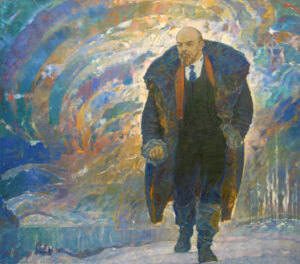
Hryhorii Bonia, Vladimir Lenin in Shushenskoe Village, 1985. Oil on canvas. Collection of The Museum of Russian Art, Minneapolis. Gift of the Jurii Maniichuk and Rose Brady Collection.
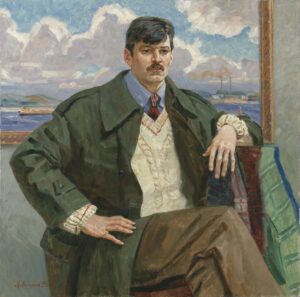
Oleksandr Lopukhov, Portrait of Jurii Maniichuk, 1995. Oil on canvas. Collection of the Mead Art Museum. Gift of the Jurii Maniichuk and Rose Brady Collection.
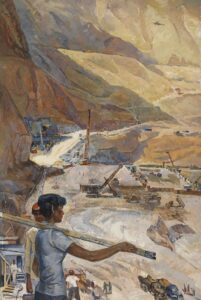
Karl Tanpeter, Construction of a Hydroelectric Station in Kyrgyzstan, 1962. Oil on canvas. Collection of the Mead Art Museum. Gift of the Jurii Maniichuk and Rose Brady Collection.
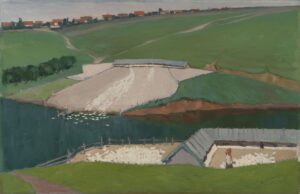
Kostiantyn Moskovchenko, Bird Farm of the Ilyich Collective Farm, 1961. Oil on canvas. Collection of the Mead Art Museum. Gift of the Jurii Maniichuk and Rose Brady Collection.
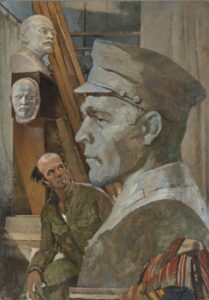
Heorhii Voloshin, Birth of a Hero, 1970. Oil on canvas. Collection of the Mead Art Museum. Gift of the Jurii Maniichuk and Rose Brady Collection.
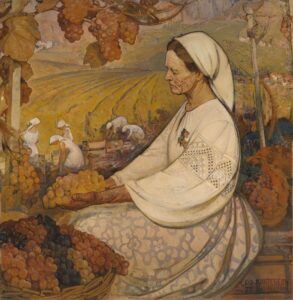
Borys Kolesnyk, Portrait of Mariia Bryntseva, Twice Hero of Socialist Labor, 1977. Oil on canvas. Collection of the Mead Art Museum. Gift of the Jurii Maniichuk and Rose Brady Collection.
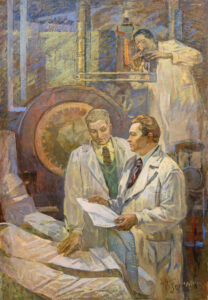
Valentina Goncharenko, Physicists. Portrait of Doctor of Technical Sciences, Prof. A. A. Lebedev, 1977–1978. Oil on canvas. Collection of The Museum of Russian Art, Minneapolis. Gift of the Jurii Maniichuk and Rose Brady Collection.
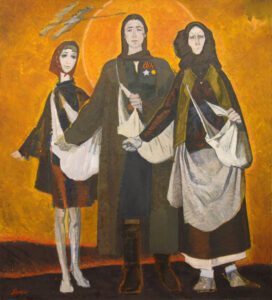
Mykhailo Antonchyk, Exploits of Women (Triumph of Women), 1965. Oil on canvas. Collection of The Museum of Russian Art, Minneapolis. Gift of the Jurii Maniichuk and Rose Brady Collection.
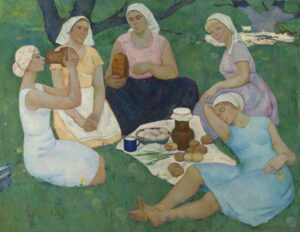
Nataliia Korobova, Noon, 1970. Oil on canvas. Collection of the Mead Art Museum. Gift of the Jurii Maniichuk and Rose Brady Collection.
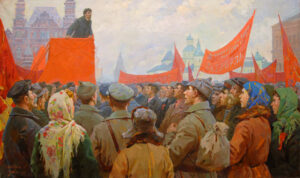
Vadym Odainyk and Zoya Odainyk-Samoilenko, Vladimir Lenin Makes a Speech on Red Square,
1960s. Oil on canvas. Collection of The Museum of Russian Art, Minneapolis. Gift of the Jurii Maniichuk and Rose Brady Collection.
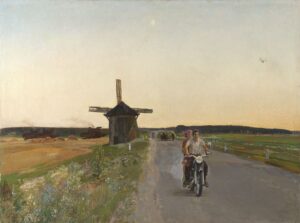
Volodymyr Zhuravel, Road, 1974. Oil on canvas. Collection of the Mead Art Museum. Gift of the Jurii Maniichuk and Rose Brady Collection.
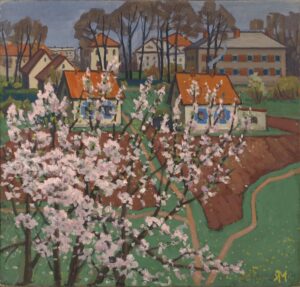
Yadviha Matseyevska, New Town, 1964. Oil on canvas. Collection of the Mead Art Museum. Gift of the Jurii Maniichuk and Rose Brady Collection.
The Mead Art Museum holds the art collection of Amherst College, celebrated for its American and European paintings, Mexican ceramics, Tibetan scroll paintings, English paneled room, ancient Assyrian carvings, Russian avant-garde art, West African sculpture, and Japanese prints.
